It’s a brand new quarter, and while your sales team is fired up, they’re a bit all over the place. One rep is digging up a slide deck from last year, another is using the latest messaging, and a new hire is winging it during demos. The enthusiasm is there, but the consistency? Not so much. That’s when deals start to slip away, and when teams start looking for Highspot alternatives that can bring structure and smarter insights to their enablement process.
Highspot, one of the most popular sales enablement platforms, was designed to solve this very issue, helping revenue teams centralize playbooks, training materials, and presentations. For many organizations, it’s become the essential backbone of enablement: one unified hub for content management, analytics, and visibility across the sales cycle.
However, the sales enablement landscape has evolved.
Nowadays, a staggering 83% of sales teams leveraging AI are seeing quicker revenue growth. This isn’t because AI is taking over human roles, but rather because it enhances overall performance. AI has quietly become the driving force behind more robust pipelines and sharper execution.
This transformation has also uncovered a gap.
In this article, we’ll explore the top Highspot competitors and alternatives for 2025, breaking down how each platform helps you scale faster, coach smarter, and connect enablement directly to revenue growth.
What is Highspot?
Highspot is a sales enablement platform that operationalizes how effective selling happens. It connects strategy to execution by aligning content, messaging, and training with deal performance and buyer engagement data. More than a content repository, it functions as a behavioral system that helps sales teams replicate what works and drive consistent revenue outcomes.
While it remains one of the most established platforms in the category, newer alternatives are expanding the definition of enablement itself, integrating conversation intelligence, AI-driven coaching, deal execution, and AI roleplay to bridge the gap between learning and live performance.
Why Companies Explore Alternatives to Highspot
Highspot delivers well on sales enablement, training, and content alignment. But when leaders aim to tie readiness directly to revenue, many find it falls short.
Even with great playbooks and strong content engagement, performance often stalls, because access to content does not neccesarily lead to effective sales execution. Modern teams need more agility, personalization, and measurable coaching impact.
And the numbers back this up:
- The global sales enablement software market is projected to grow from USD 1.84 billion in 2025 to nearly USD 29 billion by 2035 (Business Research Insights, 2025).
- Yet, only 42% of sales organizations report that their enablement efforts directly contribute to revenue growth (Sales Enablement Collective, 2025)
So, despite widespread adoption, many teams still struggle to connect training inputs to revenue outcomes.
Here’s why sales leaders are re-evaluating their enablement stack in 2025:
1. From Activity Metrics to ROI-Driven Enablement
Tracking content engagement is no longer enough.
Leaders now expect enablement platforms to prove ROI through measurable gains in ramp time, deal velocity, and win rates.
2. Coaching Visibility that Connects to Real Calls
Certifications show completion, not capability.
Modern tools need to analyze real calls and connect coaching directly to rep performance and deal outcomes.
3. The Need for Continuous, In-Flow Enablement
Quarterly refreshers can’t keep up with dynamic sales cycles.
Reps need real-time coaching nudges and contextual insights inside their daily workflow tools like CRMs and call apps.
4. AI as a Core Enabler, Not a Bolt-On
AI isn’t just another feature anymore; it’s the operating layer of modern sales.
In fact, 83% of sales teams using AI report higher revenue growth (HubSpot, 2025). But the key isn’t having AI; it’s how deeply it’s embedded into daily workflows.
5. Connecting Enablement to Business Outcomes
Enablement is no longer judged by activity metrics.
Success now means faster ramp time, higher conversion rates, and consistent revenue predictability.
In essence, while Highspot is robust for large-scale enablement, its strength in structure can also become a bottleneck when teams grow rapidly or when systems overlap. Sales leaders looking for agility, dynamic AI coaching, and personalized learning loops may start to feel the platform’s constraints, and that’s where emerging AI-driven alternatives are beginning to gain traction.
11 Best Highspot Competitors & Alternatives in 2025
Still not sure if Highspot is your perfect match? You’re not the only one. Sales teams are experimenting with a new wave of tools built for how selling actually happens today. Here are 11 Highspot alternatives that might just be a better fit in 2025.
1. Outdoo (formerly MeetRecord)
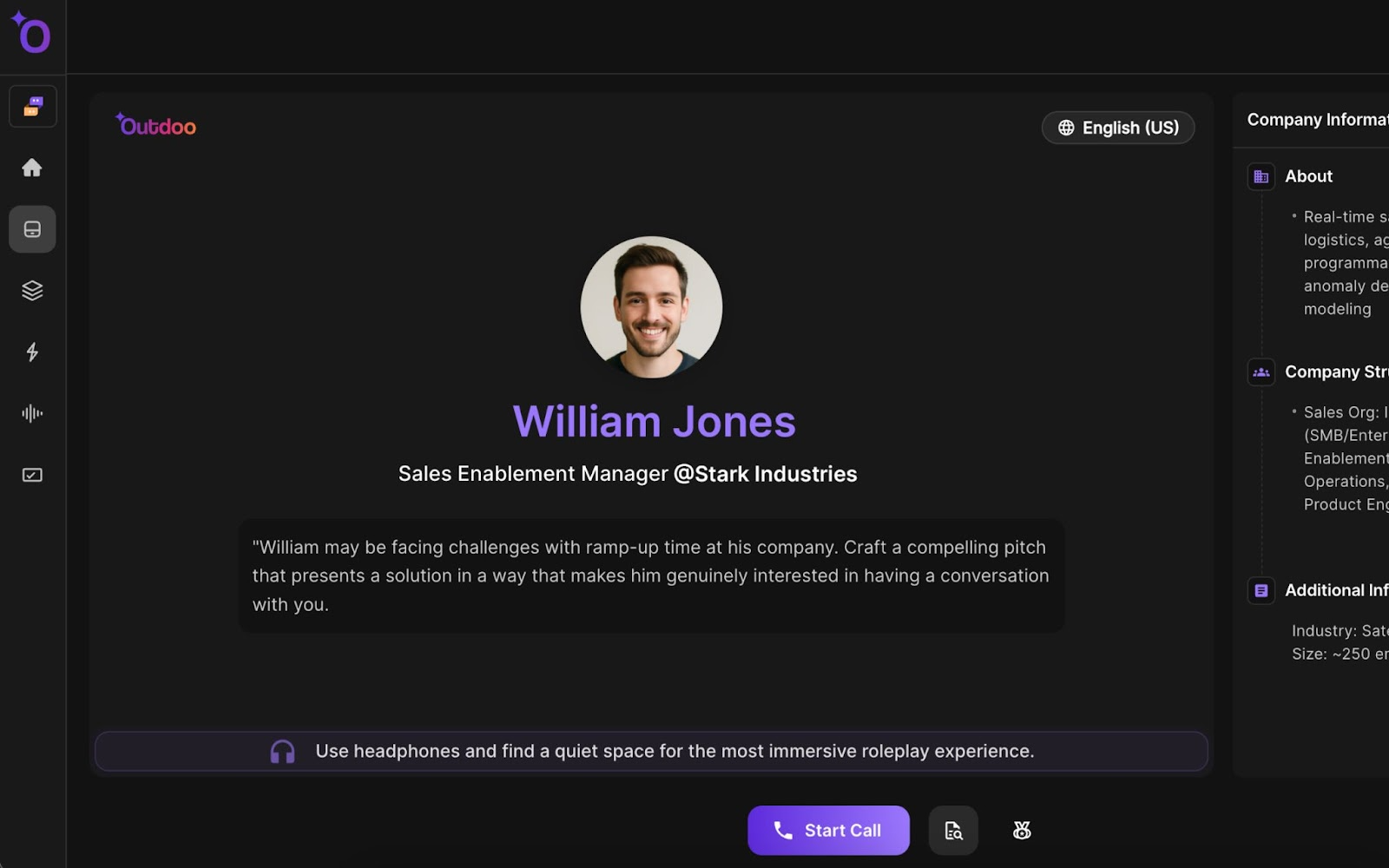
Outdoo is the leading AI Roleplay and Coaching Platform for customer-facing teams. Reps can practice real-life sales conversations, get feedback, and track progress against their pipeline results. Managers can see how training affects performance and where each rep needs support.
Pros
Cons
Pricing
Outdoo offers custom pricing based on team size, objectives, and enablement challenges. There are no hidden costs and platform fees, and pricing scales transparently with usage and required integrations.
Testimonial
2. Mindtickle
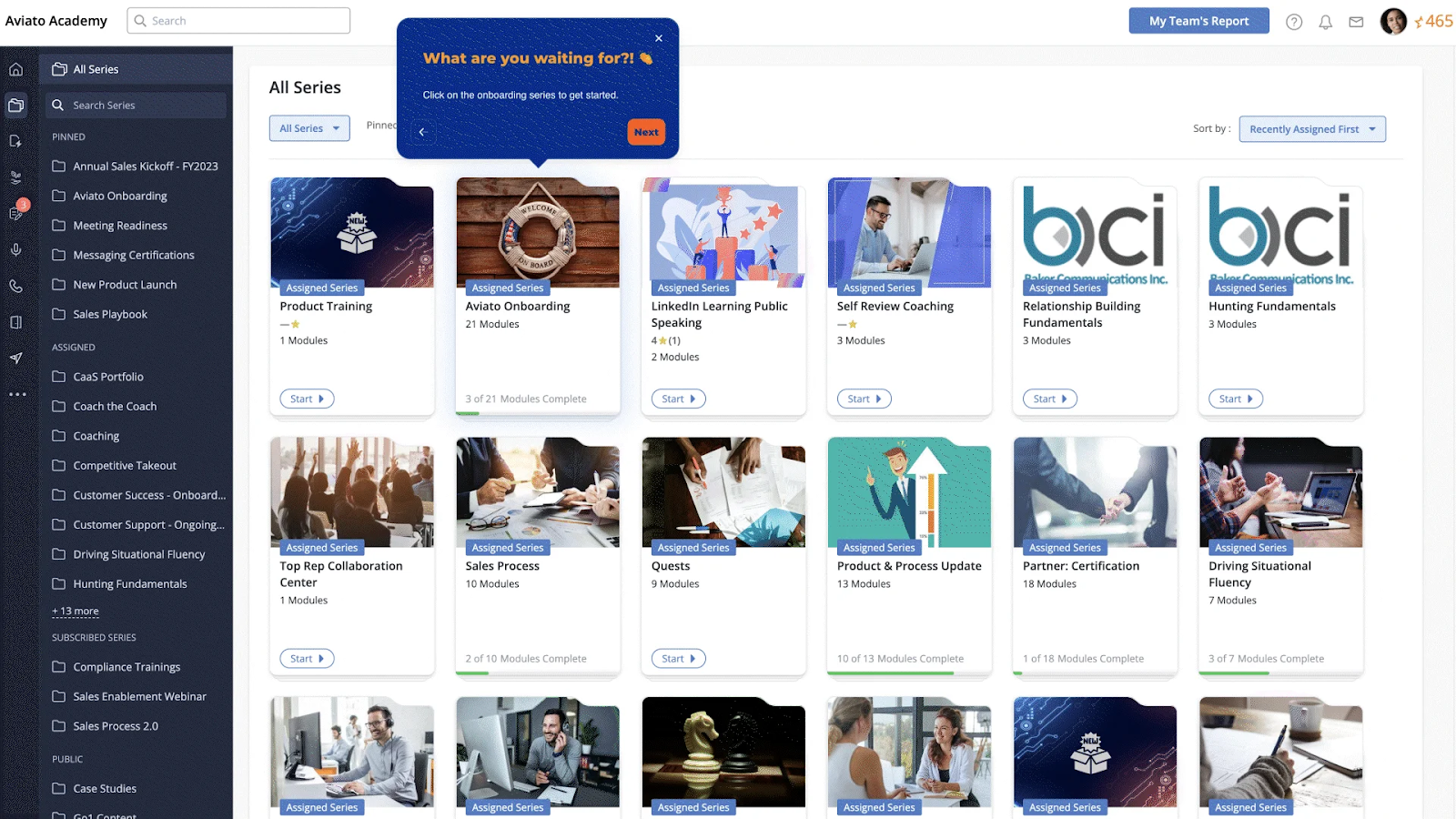
Mindtickle is a revenue enablement platform that helps teams improve performance through structured onboarding, skills assessments, and coaching. It focuses on helping leaders understand whether their reps are truly “ready to sell.”
The platform combines training modules, quizzes, and analytics to identify knowledge gaps and measure progress. For large, distributed sales teams, Mindtickle brings structure and visibility to learning, turning enablement from a one-time event into a continuous process.
Pros
Cons
Pricing
According to Vendr and other public sources, MindTickle’s pricing varies based on company size, learning goals, and integration requirements. Based on Vendr’s internal transaction data, pricing typically starts on the lower end for smaller teams and can go up to $430,000 annually for larger deployments. The average cost is around $92,000 per year.
Testimonial
3. Seismic
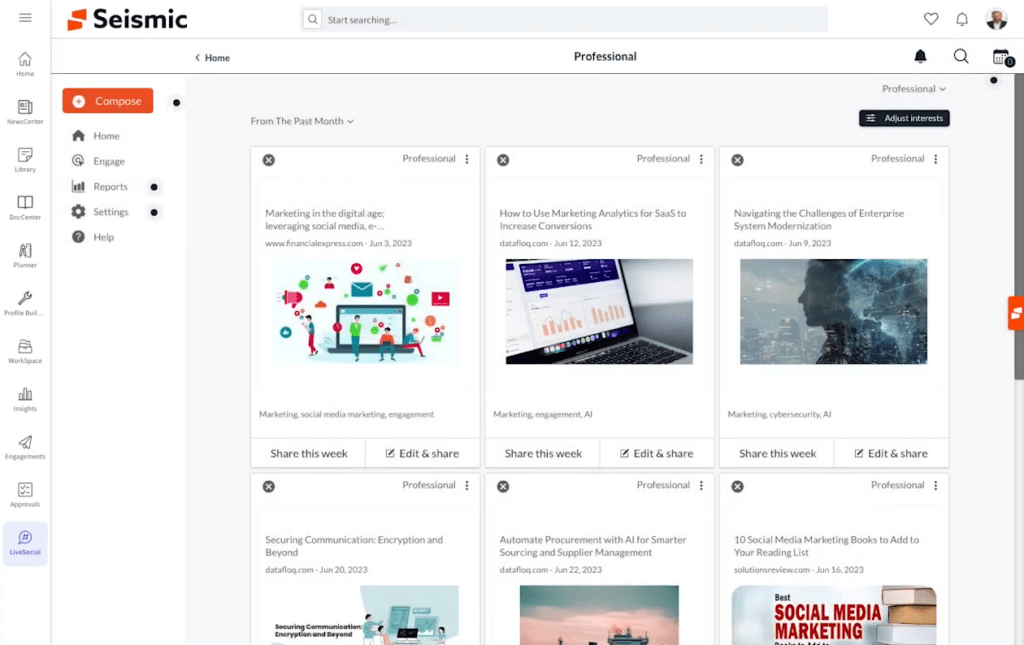
Seismic is one of the most established sales enablement platforms, designed for large enterprises that need deep content management, training, and analytics. It centralizes sales and marketing assets while ensuring reps always use the most current, approved materials.
Pros
Cons
Pricing
According to Vendr, Seismic’s pricing varies based on the edition, add-ons, and contract length. On average, enterprise plans can reach around $500,000 over a two-year period, depending on the number of modules and users included.
Testimonial
4. Showpad

Showpad is a sales enablement platform that blends content management with interactive training. It’s designed to help sellers access the right materials quickly and deliver engaging buyer experiences. The platform is especially popular among mid-sized to large teams that want a visually driven, easy-to-use solution for managing sales assets and onboarding reps.
Pros
Cons
Pricing
Showpad offers tiered plans to suit different team needs. According to publicly available data, pricing starts at approximately $32 per user per month for the Essential plan and around $42 per user per month for the Plus plan.
Testimonial
5. Allego

Allego is a comprehensive sales enablement and learning platform built to help teams capture and share knowledge at scale. It’s designed for organizations that prioritize continuous learning and want to bring sales training closer to real-world selling. The platform blends video coaching, peer learning, and content management to help reps learn in the flow of work.
Pros
Cons
Pricing
Allego’s product offerings are available via a la carte pricing. Alternatively, customers can bundle products. Pricing varies depending on the number of users and contract length.
Testimonial
6. Bigtincan
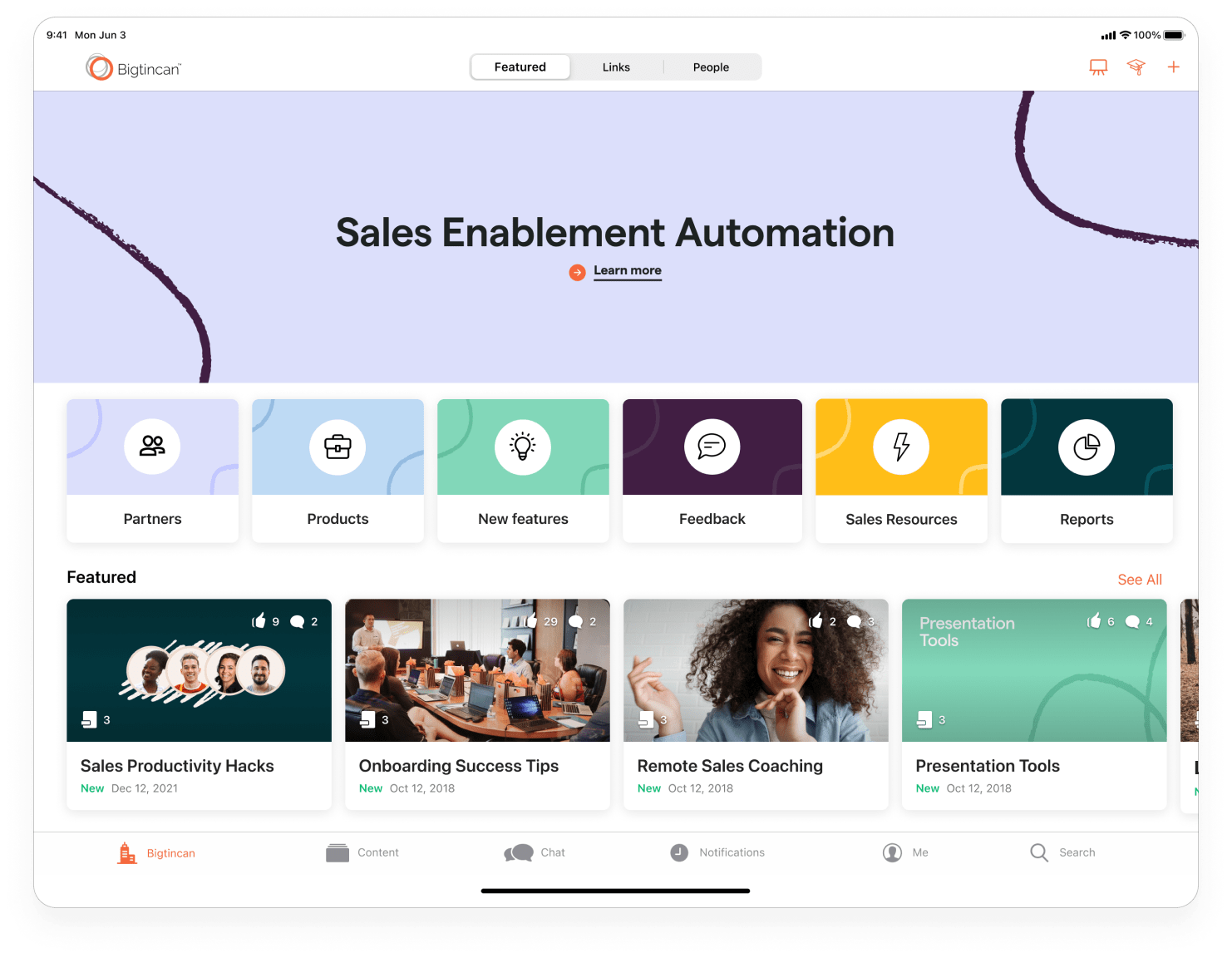
The platform brings everything together: bite-sized mobile training, real-time content access, and interactive coaching tools that fit seamlessly into a rep’s day. With AI-powered simulations, reps can practice conversations, get instant answers through the in-app GenieAI Assistant, and stay connected via a built-in social feed.
Pros
Cons
Pricing
Custom pricing based on the number of users, product modules, and deployment scale. Enterprise packages can vary significantly depending on integrations and support requirements.
Testimonial
7. Paperflite
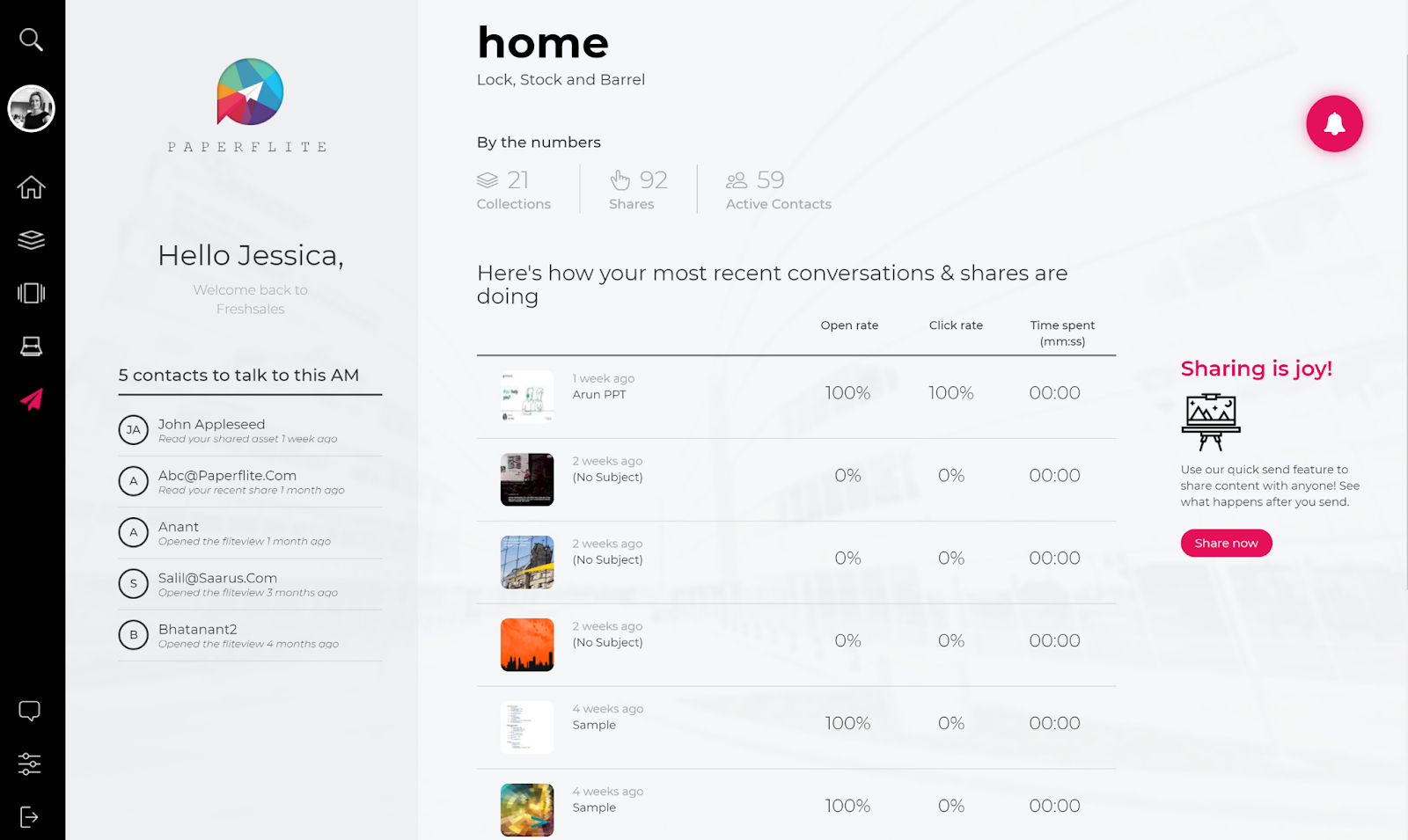
Paperflite is a content experience and sales enablement platform designed to help marketing and sales teams manage, distribute, and track content engagement across the buyer journey. It focuses heavily on creating visually rich and interactive content hubs that improve buyer engagement and brand consistency.
Pros
Cons
Pricing
Custom pricing based on user count, integrations, and deployment scale. Paperflite typically offers tailored quotes depending on organization size and specific content management needs.
Testimonial
8. Salesloft

Salesloft is a revenue workflow platform designed to help sales teams execute, coach, and forecast with greater precision. It brings together cadences, deal insights, and buyer communication tools into one interface. The platform is widely used by SDRs, AEs, and sales managers for its strong sequencing, analytics, and pipeline management capabilities.
Pros
Cons
Pricing
Custom pricing based on plan type and team size. Salesloft typically provides tiered options for core, advanced, and enterprise users, with add-ons for forecasting and AI analytics.
Testimonial
9. SalesHood

SalesHood is a sales enablement and readiness platform focused on improving team performance through structured learning, peer collaboration, and data-driven coaching. It helps sales organizations onboard new reps, reinforce learning, and measure enablement impact, all in one unified environment.
Pros
Cons
Pricing
SalesHood offers custom pricing based on the number of users, content volume, and integration requirements. Typically suited for mid-market to enterprise teams investing in structured enablement programs.
Testimonial
10. Spekit

Spekit is a just-in-time learning and digital adoption platform built to deliver training directly inside the tools sales teams use every day. Instead of long training sessions, Spekit provides bite-sized, contextual learning that appears as reps navigate CRMs like Salesforce or communication tools like Slack.
Pros
Cons
Pricing
Spekit uses a per-user pricing model with customized enterprise quotes. Pricing depends on team size, number of tools integrated, and support requirements.
Testimonial
11. Guru
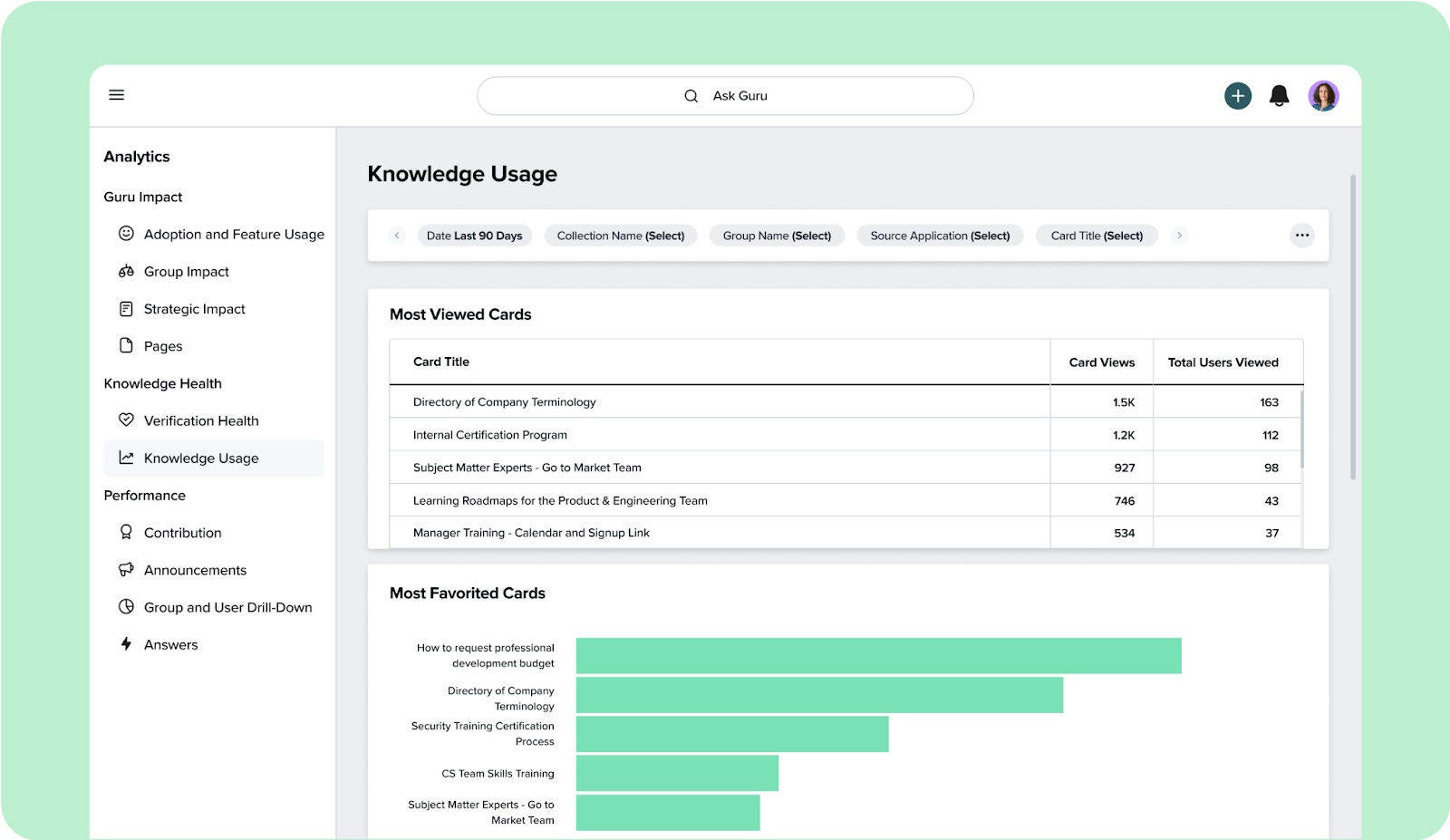
Guru is a knowledge management and enablement platform designed to centralize company information in one easily searchable space. It ensures that sales, marketing, and support teams always have accurate, verified knowledge right where they work. Guru integrates directly into daily workflows (Slack, Chrome, and CRM tools) so reps can find answers without breaking their flow.
Pros
Cons
Pricing
Guru offers tiered pricing starting with a free plan for small teams. Paid plans are based on user count and advanced features such as analytics, verification, and enterprise integrations.
Testimonial
Estimate Your ROI for Each Alternative
Every enablement platform claims to boost performance, but the real question is, by how much. If you’re improving ramp time, win rates, or coaching consistency, you need numbers that prove impact.
Our ROI Calculator helps you measure how each platform can affect your revenue outcomes. Enter your team size, primary focus, and top goal to see the potential lift in productivity and pipeline results.
See which platform delivers the highest return, and how choosing the right enablement tool can accelerate your team’s growth in 2025.
What Gaps Do Most Alternatives Have and How Outdoo Addresses Them
Today's sales enablement leaders feel pressure to show return on investment instead of just launching a new platform. Few tools significantly affect sales results, but most help with specific steps in the process. Our work with hundreds of teams shows that most enablement platforms fall short in these key areas that revenue leaders prioritize: productivity, alignment, time-to-readiness, and measurable impact.
1. Fragmented Coaching and Training
The Problem:
Many tools separate onboarding, learning, and live coaching. Reps move between platforms, and managers track progress in spreadsheets.
Why It Matters:
Fragmented systems slow ramp time and make it hard to link learning with selling performance. Reps lose consistency, and managers lose visibility.
How Outdoo Solves It:
Outdoo provides end-to-end coaching in one platform. Reps learn, practice, and apply skills in the same system. Managers see progress in real time and can coach based on data, not guesswork.
2. Static Role-Based Learning
The Problem:
In many tools, training is limited to pre-recorded videos or text lessons. Reps watch and move on without practicing real interactions.
Why It Matters:
Without live practice, reps struggle when facing buyers. Knowledge doesn’t become skill, and confidence fades when calls get complex.
How Outdoo Solves It:
Outdoo uses AI roleplays that mirror real buyer scenarios. Reps practice before and after calls, receive instant feedback, and improve faster. This builds confidence and consistency across every deal.
3. Limited ROI Visibility
The Problem:
Most enablement tools report activity data, course completions, login frequency, and content usage but not the business impact.
Why It Matters:
Leaders can’t connect learning to performance. Without proof of ROI, enablement remains a cost center instead of a growth driver.
How Outdoo Solves It:
Outdoo tracks the full path from training to revenue. Its ROI dashboards show how coaching, learning, and call performance affect pipeline and conversion, making the business case for enablement clear.
4. Reactive Deal Insights
The Problem:
Conventional analytics look backward. Managers only know what went wrong after a deal is lost.
Why It Matters:
By the time insights arrive, the opportunity is gone. Leaders miss the chance to guide deals in motion.
How Outdoo Solves It:
Outdoo’s Deal Intelligence, powered by Deal Pulse, predicts deal health early. It flags risk, recommends next steps, and enables coaching while there’s still time to influence the outcome.
5. Slow and Complex Implementation
The Problem:
Platforms like Seismic or Mindtickle can take months to set up. They often require heavy configuration and IT support.
Why It Matters:
Slow rollout delays impact. Sales teams move fast, and long implementations can stall adoption and momentum.
How Outdoo Solves It:
Outdoo deploys quickly with simple setup and guided onboarding. Teams start using it within days and see measurable results in their first quarter.
6. Decline in Engagement After Onboarding
The Problem:
Most enablement tools see engagement drop once onboarding ends. Reps complete initial courses but rarely return for ongoing practice.
Why It Matters:
Without reinforcement, skills fade and performance plateaus. Enablement becomes a one-time event instead of a continuous process.
How Outdoo Solves It:
Outdoo keeps reps active with continuous learning loops. Roleplays, scorecards, and feedback create a rhythm of improvement that lasts beyond onboarding.
7. Disconnected Data Ecosystems
The Problem:
Enablement data is often isolated from CRM and performance systems. Reps’ learning progress and deal outcomes live in separate silos.
Why It Matters:
When data doesn’t connect, leaders can’t see how coaching affects deals. Reporting stays fragmented, and strategy becomes reactive.
How Outdoo Solves It:
Outdoo’s multi-context platform brings together CRM, call data, and LMS insights in one view. It gives leaders a single source of truth for readiness, performance, and revenue impact.
8. Inflexible Pricing Models
The Problem:
Many vendors offer rigid pricing tiers or require bundles that don’t match every team’s needs.
Why It Matters:
Teams end up paying for unused features or lack access to the capabilities they actually need.
How Outdoo Solves It:
Outdoo offers custom-fit pricing based on team size, goals, and enablement maturity. Costs are transparent and tied to measurable outcomes.
Essentially, Outdoo starts with outcomes, whereas the majority of enablement tools stop at activity.
Contextual training, real-time feedback, and predictive deal intelligence are all combined to produce quantifiable results, including increased readiness, steady performance, and a clear return on investment that speaks to sales executives.
Conclusion: Turning Enablement Into Impact
The majority of enablement platforms assist teams in tracking engagement and sharing content, but they hardly ever demonstrate how those efforts translate into revenue. Sales executives thus find it difficult to connect performance, readiness, and training.
Outdoo alters that. It combines coaching, deal execution, and learning into a single system for quantifiable progress. AI roleplays before calls help representatives develop real skills.
Managers use performance insights to coach with context. With ROI-driven dashboards and deal intelligence that shows what is and isn't working, leaders can monitor impact.
Frequently Asked Questions
Highspot helps sales teams manage content, playbooks, and training to drive consistent selling.
They want simpler, AI-driven tools that tie enablement directly to revenue impact.
Outdoo delivers measurable ROI through end-to-end coaching and AI-driven roleplays.
Evaluate based on ROI impact, not just seat cost, tools like Outdoo scale value with usage.
Many users find it complex to implement and difficult to connect directly to revenue results.

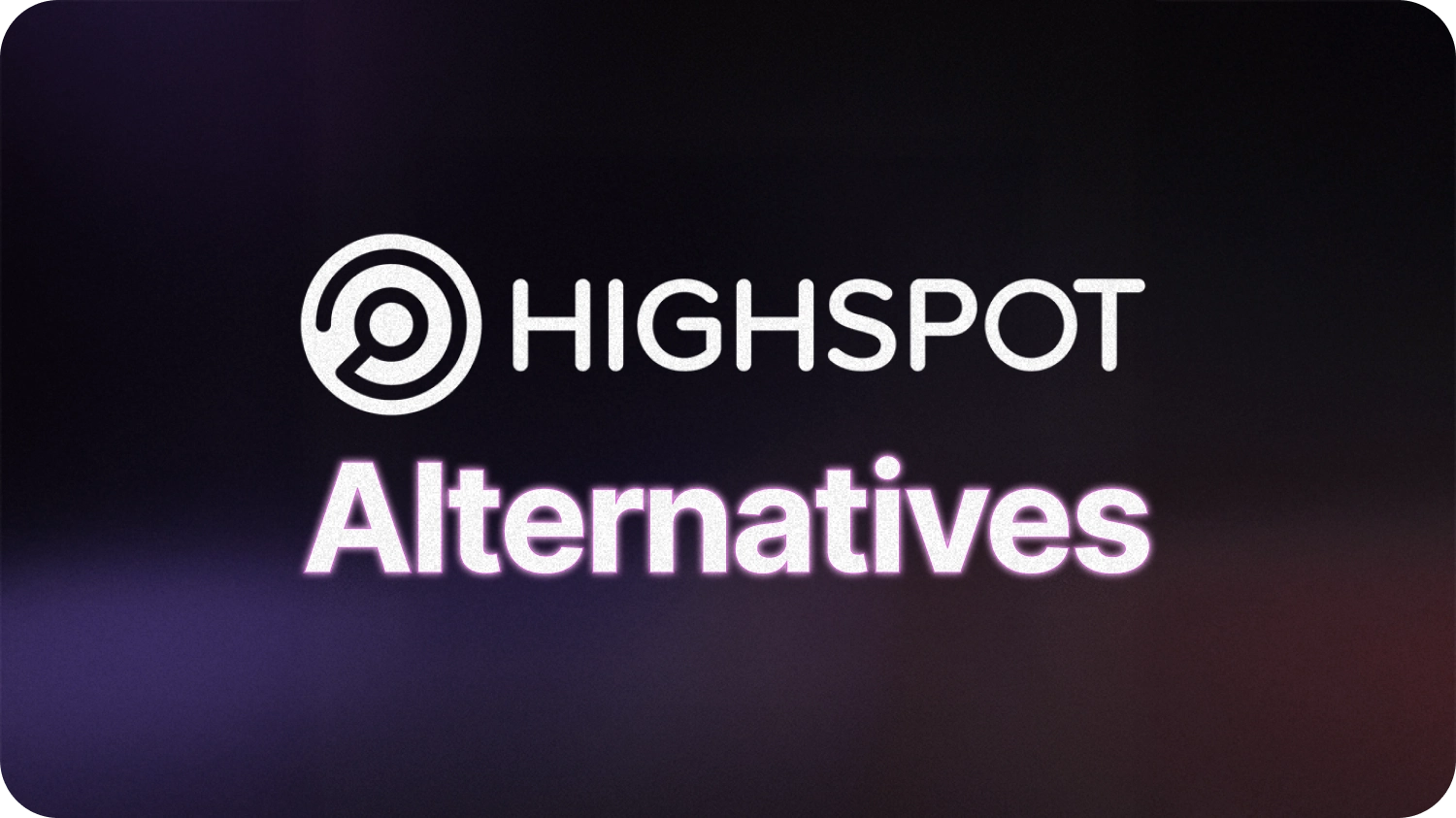
.svg)

.webp)








